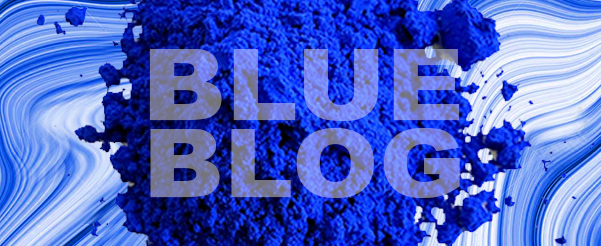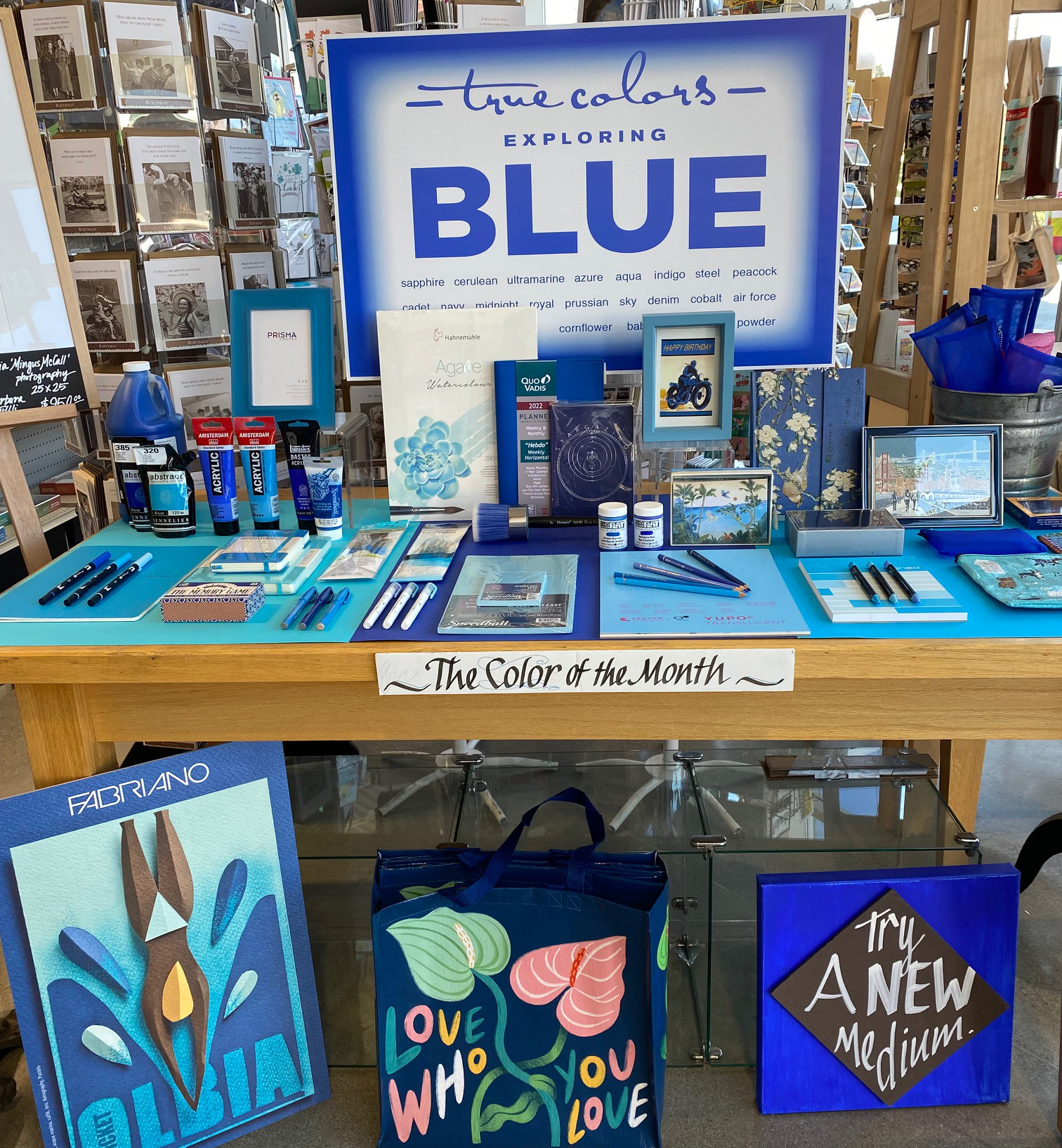
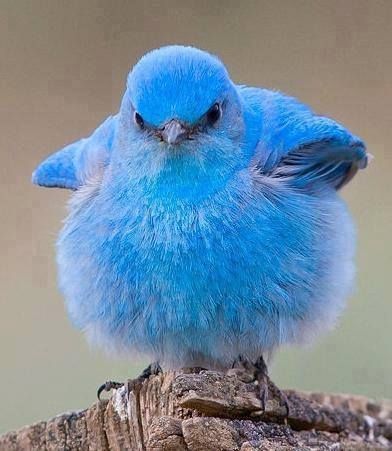
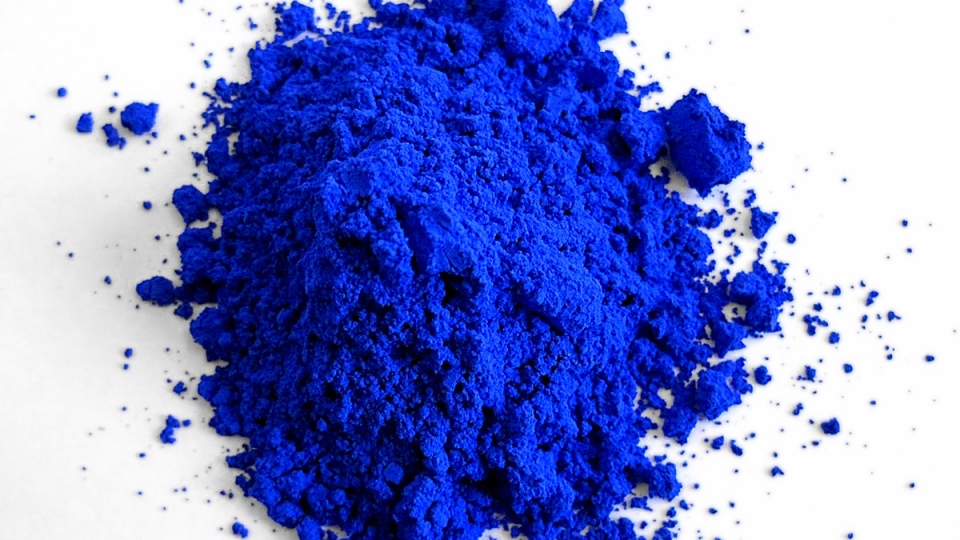
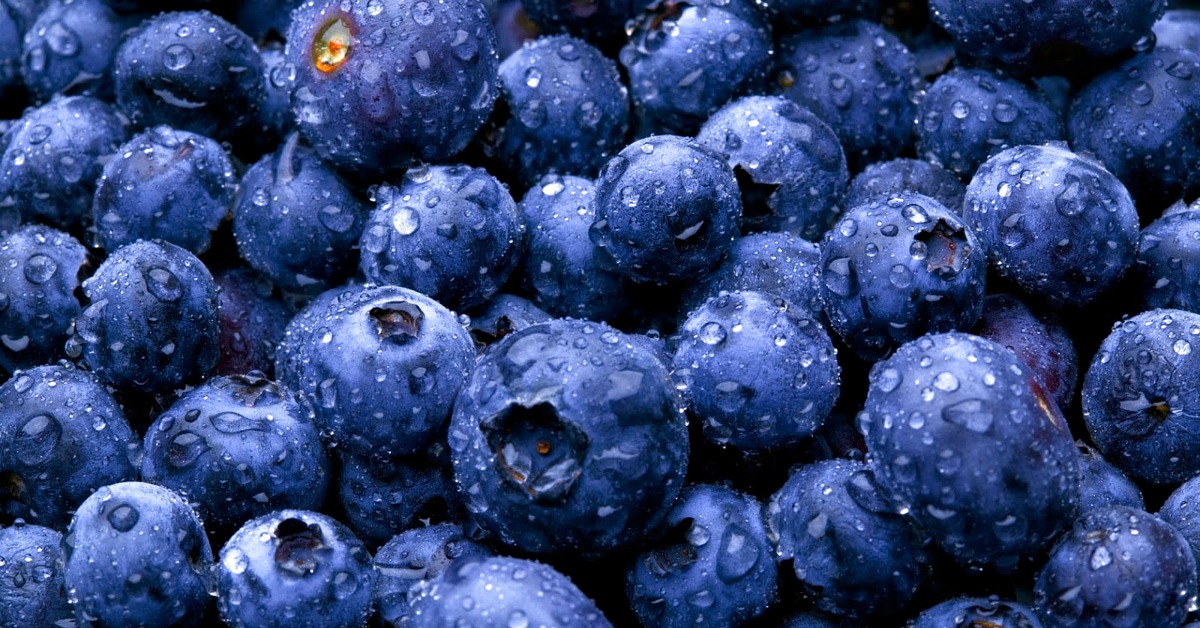
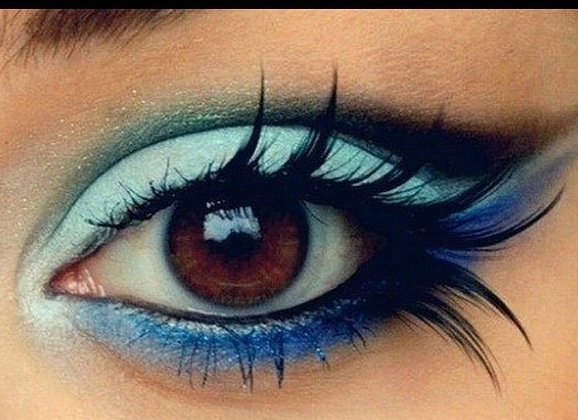
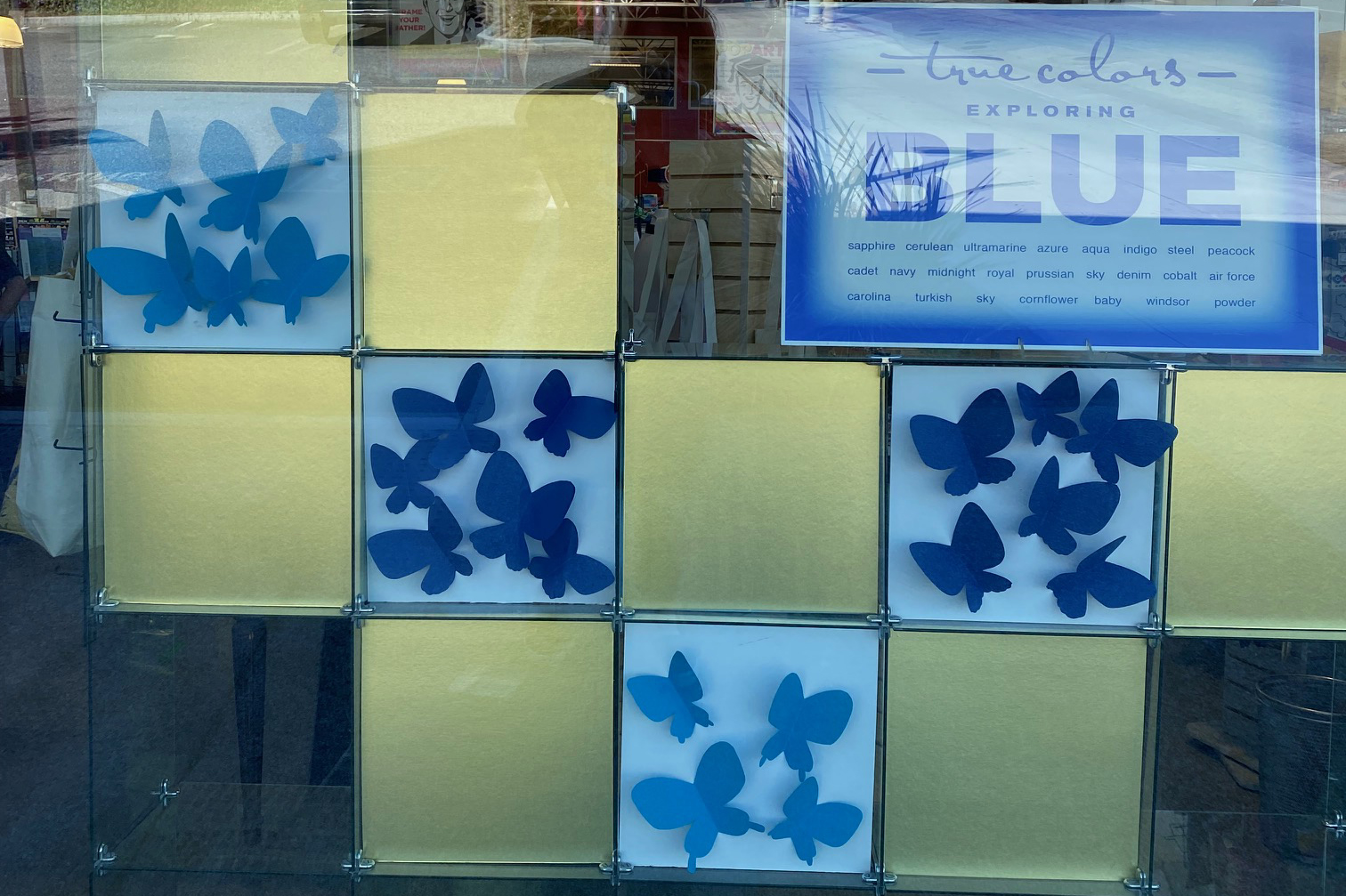

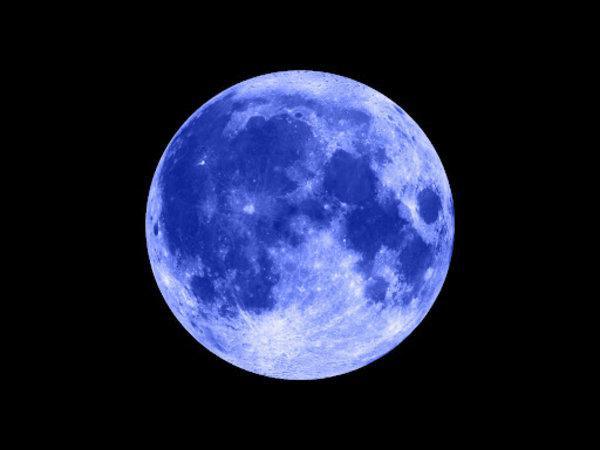
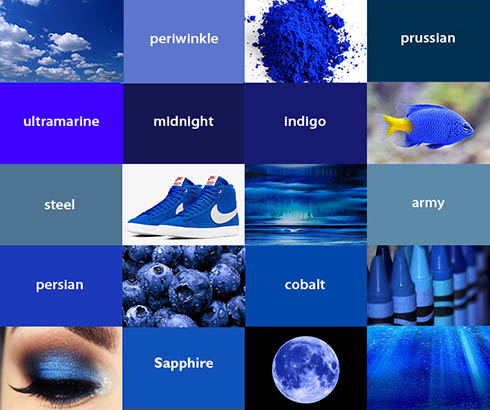
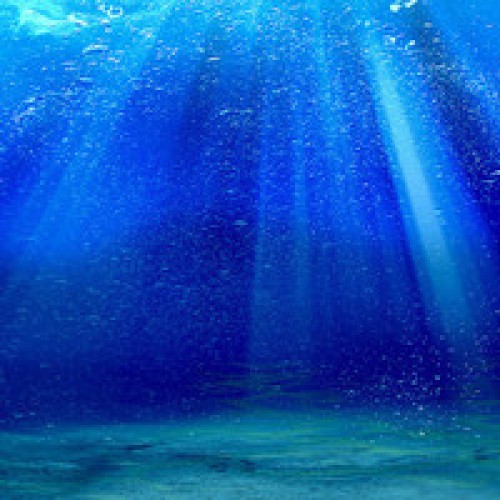
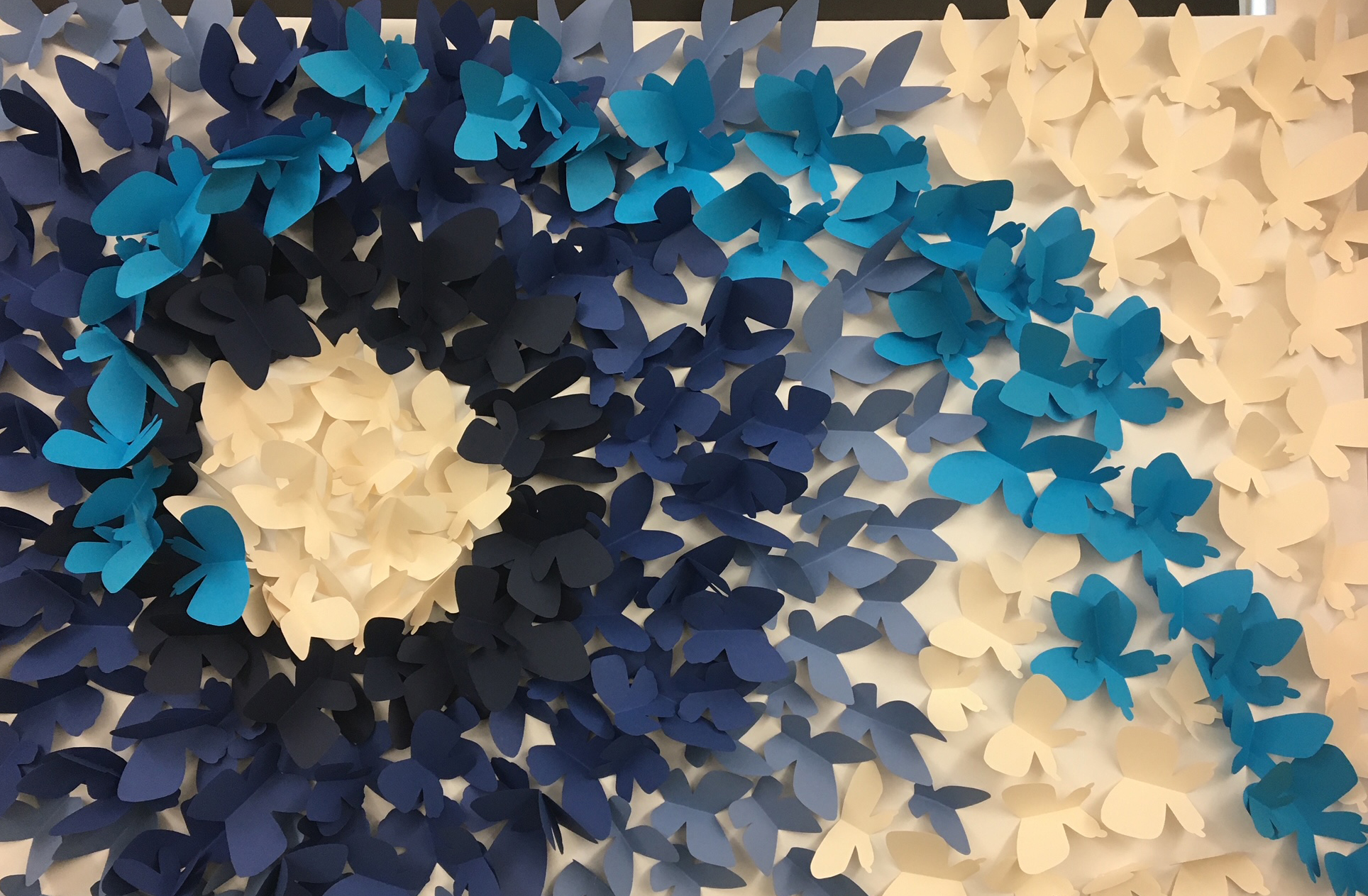
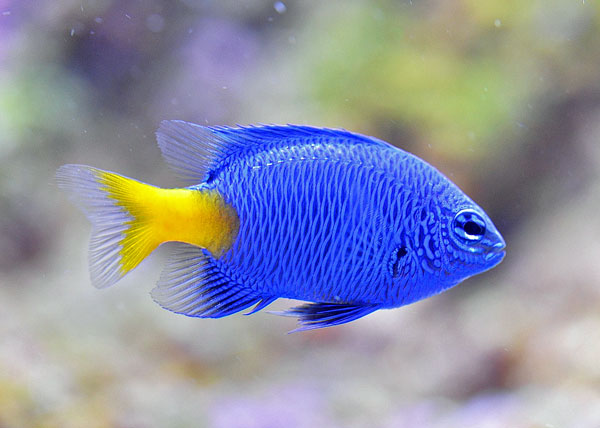

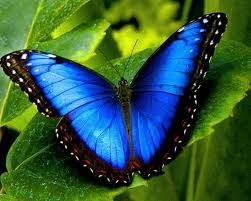
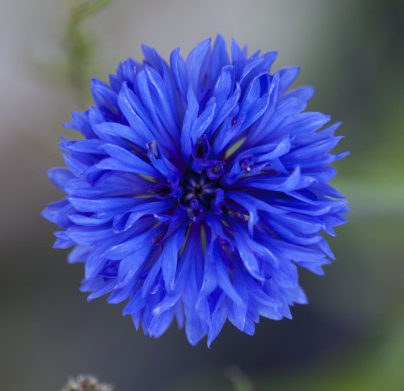
Blue is the color of the sky and water, making blue one of the most widely seen colors on the planet. It’s no wonder that blue has been a perennially favorite color. Even so, much of the science and history of blue is surprising.
Sight is integral to the human experience, and sight and color go hand-in-hand. Not so long ago colors were far less important to the human experience than they are today. Historians concluded that the word “blue” did not even exist in Greek times. It seems that blue was barely distinguished from “neutral” shades like white, light and dark.
Even as the English language developed, blue took a backseat to other colors. The first color words to appear in English were words for “white” and “black.” Next, red, the color of wine and blood appeared, followed by yellow and then green. Blue appeared last.
If you think about it, there is not a lot of blue in nature. Most people do not have blue eyes, blue flowers do not occur naturally without human intervention, and blue animals are rare – bluebirds and blue jays only live in isolated areas. The sky is blue – or is it? One theory suggests that before humans had words for the color blue, they actually saw the sky as another color. This theory is supported by the fact that if you never describe the color of the sky to a child, and then ask them what color it is, they often struggle to describe its color. Some describe it as colorless or white. It seems that only after being told that the sky is blue, and after seeing other blue objects over a period of time, does one start seeing the sky as blue.
Creating the Color Blue
Scientists generally agree that humans began to see blue as a color when they started making blue pigments. Cave paintings from 20,000 years ago lack any blue color, since as previously mentioned, blue is rarely present in nature. About 6,000 years ago, humans began to develop blue colorants. Lapis, a semiprecious stone mined in Afghanistan, became highly prized among the Egyptians. They adored the bright blue color of this mineral. They used chemistry to combine the rare lapis with other ingredients, such as calcium and limestone, and generate other saturated blue pigments. It was at this time that an Egyptian word for “blue” emerged.
Slowly, the Egyptians spread their blue dyes throughout the world, passing them on to the Persians, Mesoamericans and Romans. The dyes were expensive – only royalty could afford them. Thus, blue remained rare for many centuries, though it slowly became popular enough to earn its own name in various languages.
The Modern History of Blue
The history of blue as a color for everyday man began when the Catholic Church made an important move in the year 431 AD. At this time, the Church decided to color-code the saints, and Mary was given a blue robe. Over time, the shade of blue that Mary wore became what is now known as “navy blue.” Because Mary stood for innocence and trustworthiness, the color blue was seen ins a positive light. This same navy blue was adopted by militaries and police to convey a similar essence of trust.
As navy blue became more popular among authorities, people began to associate it with the idea of authority. Thus, different shades of blue needed to be developed in order to convey the color’s original peaceful, subdued meaning. Robin’s egg blue and pale, powder blue were developed for this purpose.
The history of blue as “the color for boys” is an even newer notion that primarily arose after the post World War II baby boom. It came about as a marketing scheme, as manufacturers could sell more clothes if some were distinctly for boys, and others were distinctly for girls.
Now, like the ancient Egyptians, people adore the color blue. It is used widely in interior design, fashion, and art, and not only is there a word for blue – there are hundreds of words for various shades….check it out!
azure / cerulean / cobalt / navy / sapphire / indigo / sky-blue / turquoise / ultramarine / aquamarine / saxe / teal / cobalt / cyan / beryl blue-gray / blue-green / Cambridge blue / lapis lazuli / navy / Oxford blue / royal / blue teal / blue sea / sky blue / bright blue / deep blue / pale blue / baby blue / sky-coloured / clear blue
